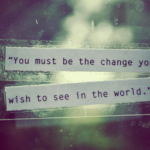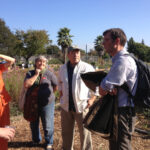Why did you create the “What We Can Do” project?
For the past few years, since fall 2013, I’ve been teaching a course at Otis College of Art and Design, called Human Ecology, with Elektra Grant.
Through my part of the course, I focused on solutions: What We Can Do. I showed the students how solutions to these interconnected problems needed to be interconnected themselves: interconnected solutions. I exposed them to the concepts of Permaculture, showed them examples such as the international Transition Movement, and brought in the ideas of world class thinkers such as David Holmgren, Joanna Macy, and many others. I showed them many kinds of sustainable solutions that communities were experimenting with, someplace in the world.
For a long time, I’ve wanted share this information outside of Otis — specifically to share it with you, my readers. And the silver lining in the horrendous upheaval of covid shutdown is that I now have something to share.
During the shutdown, I had to pivot — from presenting my lectures in person in a classroom, to pre-recording them on video for the students to watch. It was an excruciating process, and I quickly learned that I wasn’t very good with video, I needed a script. That meant I needed to write out the lectures I’ve been giving for 6 years, print them out, and use it as a script while recording the videos. But as I said, the silver lining is that today, those lectures are all written out: You can read them.
Over the next weeks and months, I’ll be posting them to my blog, a little at a time, in digestible segments. Many of the segments come with reflection questions to help you contemplate with this information might mean in your life and in your activism. Some come with concrete action items, things that you can do immediately in your everyday life and in your community.
I hope this posting series is useful to you.
Learn more about the What We Can Do project here.



